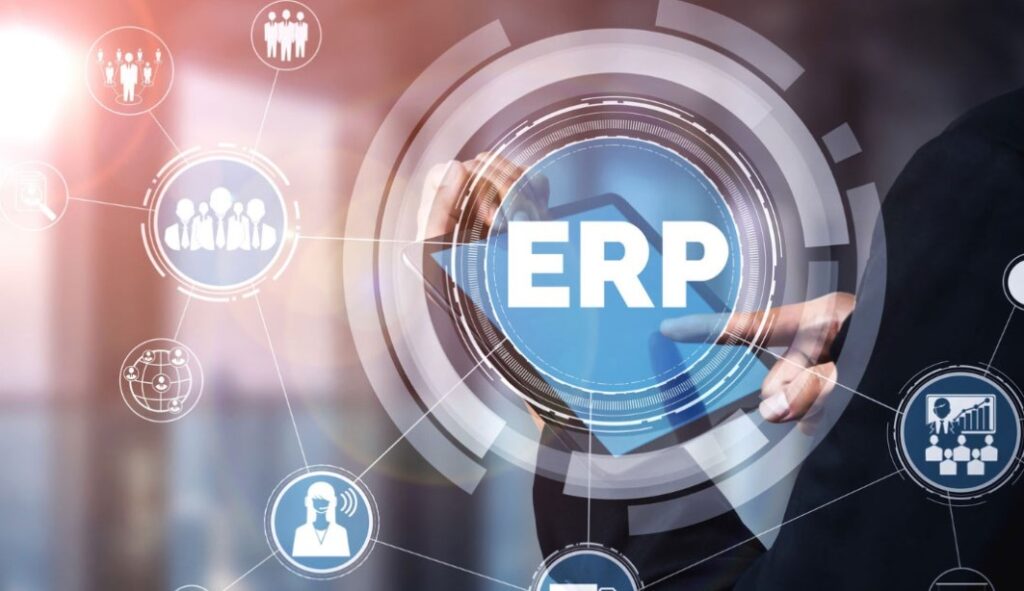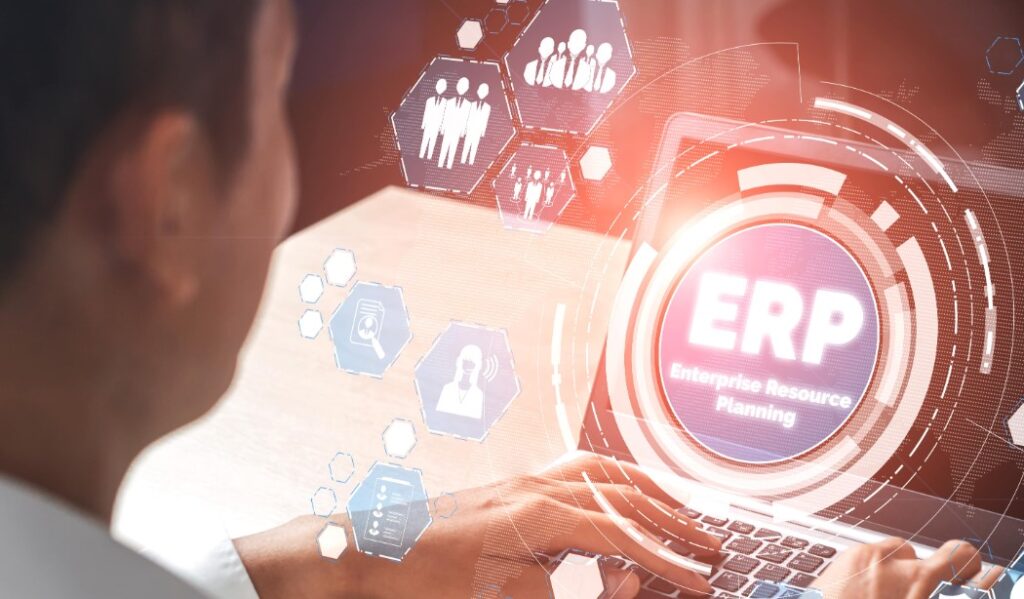Implementing an Enterprise Resource Planning (ERP) system is a strategic move for businesses, yet it comes with complexities, including costs. In this guide, we will explore the key factors that influence ERP implementation costs, the benefits of adopting an ERP system, and showcase real-world products, offering an in-depth comparison of pricing, features, and use cases.
We’ll cover everything from understanding the cost breakdown of ERP solutions to how to purchase them and integrate them into your business seamlessly. Let’s dive into this comprehensive guide to ERP implementation costs!
What is ERP Implementation and Why is it Important?

Enterprise Resource Planning (ERP) implementation is the process of integrating an ERP software system into a business’s operations to unify and streamline various functions such as finance, human resources, supply chain management, and customer relationship management (CRM). ERP implementation is much more than just installing software; it involves configuring the system to fit the organization’s specific needs, training employees, and ensuring the ERP system works smoothly with existing processes and data.
The ERP system acts as the central hub that connects all major business activities, allowing for real-time data exchange, improving efficiency, and eliminating data silos. Below is a more detailed breakdown of ERP implementation and its importance for businesses.
Key Phases of ERP Implementation:
- Planning and Strategy: In this initial phase, businesses assess their current processes, define goals, and decide which ERP features are essential. A clear implementation strategy is developed to ensure the ERP system aligns with business objectives.
- System Selection and Configuration: The next step is selecting the right ERP system based on the company’s size, industry, and specific requirements. The software is then configured to reflect the business’s operational needs, which often involves customizing modules to ensure seamless integration with existing workflows.
- Data Migration: All historical and current data from various business areas (finance, HR, etc.) is transferred to the new ERP system. This is one of the most critical and time-consuming steps since data must be accurately migrated to prevent disruptions.
- Training and Testing: Employees are trained to use the new system effectively. User acceptance testing (UAT) ensures the ERP system functions as expected and that all processes run smoothly before going live.
- Deployment and Support: Once the ERP system is tested, it’s deployed across the organization. Post-implementation support is crucial to resolve any issues and ensure that employees adapt to the system.
Why ERP Implementation is Crucial for Businesses
- Centralized Data Management: ERP systems consolidate data from all departments, providing a unified view of business operations. This centralization eliminates the need for multiple software systems, reduces errors, and ensures that everyone in the organization works from the same set of data.
- Increased Operational Efficiency: By automating routine tasks like invoicing, payroll, and inventory management, ERP systems free up employees to focus on more strategic activities. Automation also reduces the risk of human errors, leading to faster, more reliable operations.
- Improved Decision-Making: ERP systems provide real-time insights into business operations, allowing managers to make data-driven decisions. Whether it’s forecasting demand or tracking cash flow, ERP systems deliver critical information at the right time, helping businesses respond quickly to changes.
- Scalability and Flexibility: As businesses grow, their needs evolve. ERP systems are designed to scale with the organization, adding new modules or functionalities as required. Whether a business needs to expand its supply chain or enter new markets, an ERP system can accommodate such growth efficiently.
- Cost Savings: Although ERP implementation can be costly upfront, businesses often experience significant cost savings in the long run. ERP systems eliminate the need for multiple software systems, reduce labor costs, and streamline processes, leading to lower operational costs over time.
- Regulatory Compliance and Security: For industries that are heavily regulated, such as finance or healthcare, ERP systems ensure compliance by automating reporting and audit trails. Additionally, ERP systems come with built-in security features to protect sensitive business data, reducing the risk of data breaches.
Breakdown of ERP Implementation Costs:
ERP implementation costs vary depending on several factors, such as:
- Software License Fees
- Customization & Integration
- Training & Support
- Maintenance
Understanding these cost components is crucial for estimating your overall budget.
Real-World ERP Systems: Detailed Product Overview

Below are five popular ERP systems that cater to different business needs. Each offers unique features, pricing, and benefits.
1. SAP S/4HANA
SAP S/4HANA is designed for larger enterprises that require a robust system to manage complex processes.
- Features: Real-time data analysis, AI integration, comprehensive financial management.
- Use Case: Best for large organizations with complex supply chains and financial needs.
- Pros: Highly customizable, extensive functionality.
- Cons: High implementation costs, requires significant training.
- Price: Starting at $1,500/user/month.
- Where to Buy: Available directly from SAP’s website.
2. Oracle NetSuite
Oracle NetSuite is a cloud-based ERP designed for growing businesses, offering flexibility and scalability.
- Features: Financial management, order processing, inventory control.
- Use Case: Ideal for mid-sized businesses looking for scalability.
- Pros: Cloud-based, scalable, easy to integrate.
- Cons: Can become expensive with added customizations.
- Price: Starting at $999/user/month.
- Where to Buy: Purchase from NetSuite’s website.
3. Microsoft Dynamics 365
Microsoft Dynamics 365 provides comprehensive ERP and CRM functionalities integrated with Microsoft’s ecosystem.
- Features: Unified operations, CRM integration, cloud-based flexibility.
- Use Case: Best for businesses already using Microsoft tools (Office 365, Azure).
- Pros: Seamless integration with Microsoft apps, flexible deployment options.
- Cons: Can be complex to implement.
- Price: Starting at $190/user/month.
- Where to Buy: Available on Microsoft’s website.
4. Infor CloudSuite
Infor CloudSuite is designed for specific industries like manufacturing, healthcare, and retail.
- Features: Industry-specific modules, AI-driven analytics.
- Use Case: Great for businesses with industry-specific needs.
- Pros: Tailored for industry needs, advanced analytics.
- Cons: Steep learning curve for customization.
- Price: Custom pricing based on requirements.
- Where to Buy: Contact Infor directly.
5. Odoo
Odoo is an open-source ERP that offers flexibility and affordability for small businesses.
- Features: Modular system, open-source flexibility.
- Use Case: Ideal for small to medium businesses on a budget.
- Pros: Affordable, customizable.
- Cons: Requires technical expertise for customization.
- Price: Free basic version, premium starts at $24/user/month.
- Where to Buy: Get it from Odoo’s website.
Comparison Table: ERP Systems

| Product | Use Case | Pros | Cons | Price | Features |
|---|---|---|---|---|---|
| SAP S/4HANA | Large enterprises | Highly customizable, AI integration | High cost, complex setup | $1,500/user/month | Real-time data, comprehensive financial management |
| Oracle NetSuite | Growing businesses | Cloud-based, scalable | Expensive customization | $999/user/month | Financial management, order processing |
| Microsoft Dynamics 365 | Businesses using MS ecosystem | Seamless integration, flexible | Complex to implement | $190/user/month | Unified operations, CRM integration |
| Infor CloudSuite | Industry-specific organizations | Tailored solutions, AI-driven | Steep learning curve | Custom pricing | Industry-specific modules, advanced analytics |
| Odoo | Small to medium businesses | Affordable, open-source flexibility | Requires technical expertise | $24/user/month | Modular system, customizable |
Benefits of Implementing an ERP System

1. Increased Efficiency
ERP systems automate manual processes, reducing the time needed to complete tasks and minimizing human errors. This directly translates into higher productivity.
2. Improved Financial Insights
With real-time reporting and analytics, ERP systems provide financial insights that enable businesses to make informed decisions and forecast more accurately.
3. Better Customer Management
Integrating ERP with CRM systems enables businesses to manage customer relationships more effectively, resulting in higher customer satisfaction and loyalty.
4. Cost Savings
While initial ERP implementation may be costly, long-term savings can be realized by reducing operational redundancies and improving overall efficiency.
Where and How to Buy ERP Systems
Steps to Purchase:
- Evaluate Your Business Needs: Understand which features are essential for your business.
- Request a Demo: Most ERP providers offer a demo or free trial.
- Get Quotes: Contact vendors for specific pricing based on your business requirements.
- Purchase: Directly from vendor websites or through authorized resellers.
Where to Buy ERP Systems:
- SAP S/4HANA: Buy from SAP’s Website
- Oracle NetSuite: Purchase from NetSuite
- Microsoft Dynamics 365: Get it from Microsoft
- Infor CloudSuite: Contact Infor for Pricing
- Odoo: Buy Odoo here
Use Cases: Problems ERP Systems Solve

ERP systems are designed to address a wide range of business challenges by providing an integrated solution that enhances visibility, efficiency, and control across various departments. Below, we will explore some of the most common problems ERP systems solve, providing detailed explanations and real-world examples that illustrate how these solutions can improve business operations.
1. Disconnected Systems and Data Silos
Problem:
Many businesses struggle with the challenge of managing different software systems for various departments such as finance, HR, supply chain, and inventory. Each department operates in its own “data silo,” meaning data isn’t easily accessible across the organization. This leads to inefficiencies, duplication of work, and delays in decision-making.
How ERP Solves It:
ERP systems eliminate data silos by integrating all business functions into a single, unified platform. With a centralized database, every department has access to real-time data, ensuring that operations are synchronized. This leads to better communication between departments, more efficient workflows, and a clear view of business performance.
Real-World Example:
A manufacturing company using separate systems for procurement, inventory management, and sales struggled with stockouts due to a lack of real-time data sharing. After implementing an ERP system, the procurement and sales departments gained visibility into inventory levels, enabling them to coordinate orders better, reduce stockouts, and optimize inventory levels.
2. Manual Processes and Inefficiencies
Problem:
Manual processes, such as entering data into spreadsheets or reconciling accounts by hand, are not only time-consuming but also prone to human error. These inefficiencies can slow down operations and result in costly mistakes.
How ERP Solves It:
ERP systems automate repetitive tasks such as data entry, invoicing, payroll, and reporting. Automation reduces the time needed for these processes, minimizes human error, and increases overall productivity. Employees can then focus on higher-value activities such as strategy development or customer engagement, rather than manual tasks.
Real-World Example:
A retail business managing payroll and employee schedules manually found that errors were common, resulting in delays and discrepancies in payroll processing. After implementing an ERP system, the company automated its payroll and HR processes, reducing errors by 90% and freeing up HR staff to focus on talent management and employee development.
3. Inaccurate Financial Reporting
Problem:
Many businesses face challenges in generating timely and accurate financial reports due to fragmented systems and inconsistent data. This leads to delays in decision-making and can hinder a company’s ability to meet regulatory compliance requirements.
How ERP Solves It:
ERP systems provide real-time financial data and automate financial reporting. With all financial transactions centralized in one system, reports are generated quickly, with accurate and up-to-date information. ERP systems also ensure compliance with accounting standards and regulations by automating tax calculations, auditing processes, and generating financial statements according to legal requirements.
Real-World Example:
A medium-sized accounting firm struggled with compiling financial reports from multiple software systems, which led to inaccuracies and time-consuming reconciliations. By implementing an ERP system, they streamlined their financial reporting processes, ensuring that they could generate real-time, accurate financial statements with just a few clicks. The ERP system’s compliance features also simplified their tax reporting processes, saving the firm significant time and resources.
4. Inventory Management Issues
Problem:
Poor inventory management, such as overstocking or understocking, can result in lost sales, excessive carrying costs, and decreased customer satisfaction. Many businesses struggle to keep track of inventory levels across different locations or departments, leading to inefficiencies and errors in order fulfillment.
How ERP Solves It:
ERP systems offer comprehensive inventory management features, enabling businesses to track stock levels in real-time, manage orders, and optimize supply chain operations. Automated inventory tracking ensures that businesses have the right amount of stock at the right time, reducing overstock and stockouts. Additionally, ERP systems can integrate with supplier management tools to automate reordering processes based on predefined thresholds.
Real-World Example:
A global e-commerce company used spreadsheets to track inventory, which often resulted in stock discrepancies and delayed deliveries. After adopting an ERP system, the company gained real-time visibility into inventory across all warehouses, leading to better order fulfillment, reduced inventory carrying costs, and increased customer satisfaction.
5. Customer Relationship Management (CRM) Challenges
Problem:
Many businesses struggle with managing customer interactions and maintaining strong relationships with their clients. Without a unified system, customer data can be fragmented across different departments, leading to poor customer service, missed opportunities, and a lack of personalized engagement.
How ERP Solves It:
ERP systems often include CRM modules that centralize customer information, providing a complete view of customer interactions, purchase history, and preferences. With this data, businesses can offer personalized experiences, track leads and sales more efficiently, and improve customer satisfaction. An integrated CRM and ERP system also helps sales, marketing, and customer service teams work together more effectively by giving them access to shared customer data.
Real-World Example:
A B2B company was using separate tools for sales, marketing, and customer support, resulting in inconsistent customer data and poor customer follow-up. After implementing an ERP system with an integrated CRM module, the company streamlined its customer engagement strategy, leading to faster response times, personalized marketing campaigns, and a 20% increase in customer retention.
FAQs
1. How long does ERP implementation take? ERP implementation timelines vary but typically range from 6 to 18 months, depending on the complexity of the system.
2. Can small businesses afford ERP systems? Yes, with systems like Odoo, small businesses can find affordable ERP solutions that fit their budget.
3. What are the hidden costs of ERP implementation? Hidden costs include training, customization, and ongoing maintenance fees.
4. What industries benefit most from ERP systems? Industries like manufacturing, retail, healthcare, and finance see the most significant benefits from ERP systems.
5. How do I choose the best ERP system? Evaluate based on your specific business needs, scalability, ease of integration, and budget.
By using this guide, businesses can better understand ERP implementation costs and make informed decisions to choose the right ERP solution that fits their specific needs!
